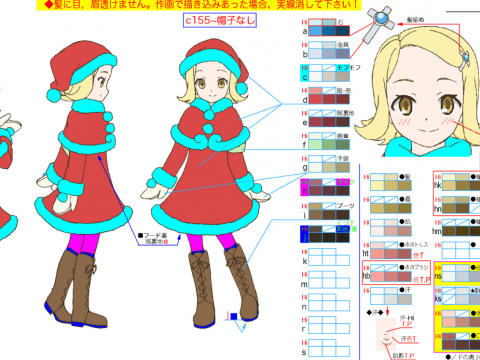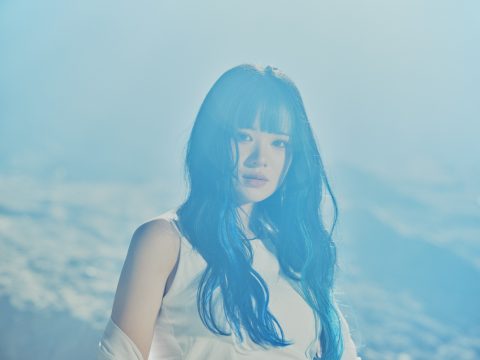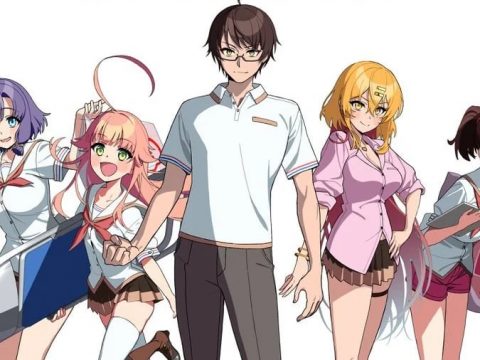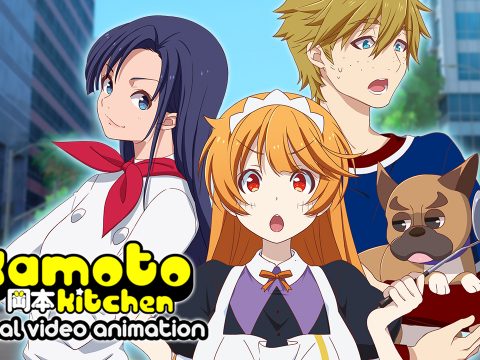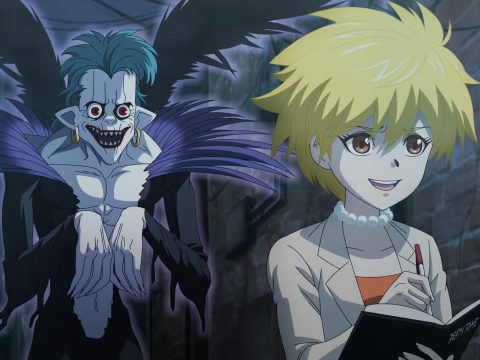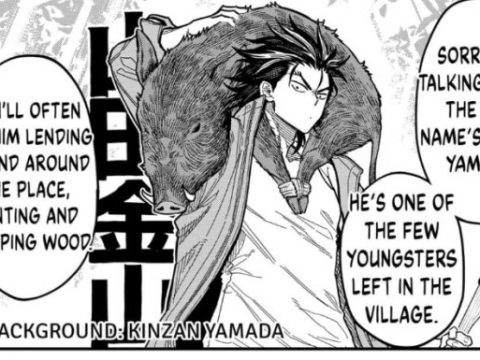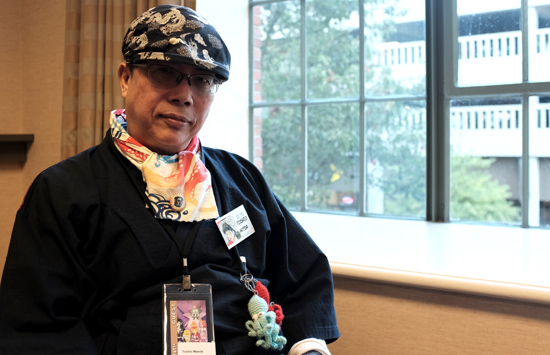
We weren’t sure what to expect when we met Toshio Maeda. Known as the “Tentacle Master,” Maeda created some of most infamous hentai manga of the 80s and 90s, including Urotsukidoji: Legend of the Overfield and Demon Beast Invasion, which changed adult manga world forever by introducing tentacles and other beastly appendages to the mix.
What we found in talking to Maeda was an charming, articulate (though he’s never lived abroad, his English is near-perfect) and passionate artist who was ready and willing to talk about anything, including the influence of American comics, fights with editors, and his hatred of moe.
Warning: this interview contains subject matter that may not be appropriate for those under 18.
We’ve read that you read a lot of American superhero comics growing up. What attracted you to that style of comics versus Japanese manga?
Actually, to be exact, when I was a little boy I was fascinated and influenced by Walt Disney. Just like most Americans, probably. Or at least the older ones. Films like Dumbo or Sleeping Beauty were such high quality films. I was really moved and touched by them. After that, I’d watch shows like Woody Woodpecker or Road Runner, so I really loved that American animation. Then when I was around 10, Astro Boy came out and more and more Japanese anime was being created.
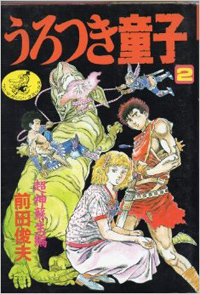
At the same time, I was very influenced by rental manga. Back then there was a system of renting manga. We didn’t have much money back then so we couldn’t just buy new magazines. So we had rental manga shops, where you could borrow manga for a day or two for 10 or 20 yen. The themes of many of those rental manga were so dark and gloomy, with lots of scenes of people being attacked or killed. Because of that, my mom was always scolding me that I’d become a serial killer in the future. But I loved that dark atmosphere.
After that, weekly magazines started coming out so I started reading weekly magazines like Shonen Jump. But then weekly magazines wiped out rental manga.
When I became a manga assistant, around the time I was 16, I bumped into American comics in Tokyo, which we didn’t have in Osaka. That was a golden age of American comic strips with artists like Bernie Wrightson, Gill Kane and Joe Kubert. There was such a variety of American comics at the time and there were some genius artists working then. I was influenced by such an American style and the accurate anatomy of the human body—I learned anatomy from that, and tried to modify American comics into Japanese style.
I’m just a combination: my style is a combination of American style and Japanese rental manga. Not Osamu Tezuka style, not Astro Boy-style manga. But a lot of artists for rental manga were influenced by American comics too. So, my style is easily accepted [by Americans] because part of my style is American style. That’s why.
Would those rental comics be considered gekiga?
Yes, it was completely gekiga. And I called my style “gekiga style.” It’s kind of old fashioned right now, but I stuck with it. [laughs]
Who were some of the artists you worked for as an assistant?
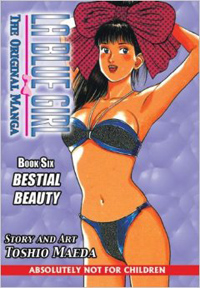
My mentor was Kenji Nanba. He wasn’t famous but his work appeared in Shonen Jump. I actually wanted to be an assistant for another famous manga artist, but he didn’t need an assistant at the time. When I was 16 I really wanted to run away from my hometown so I was desperate, and was really searching for an artist to be my mentor and he was the only one who needed an assistant at the time. He had 800 applicants at the time.
It’s well-known that the production process for magazines like Shonen Jump can be very strenuous, with artists having to work every day—
Yes, like slaves. [laughs]
Is working in adult and hentai comics any different?
Actually, there’s really no line between hentai artists and shonen or shojo type manga. I’ve worked not just on hentai manga, but also educational manga, political manga, manga for ladies and manga for kids and even the cover of novels.
I’m a jack of all trades but probably master of none. Well maybe, a master of tentacles [laughs].
Is there any relationship between your use of tentacles and older ukiyo-e style Japanese artwork?
People always ask me that! When I got started using tentacles using tentacle scenes in my manga I didn’t think I was being influenced by artists like Hokusai and ukiyo-e prints, but I don’t know. It may be subconsciously implanted inside of me. As a kid I’d look at at ukiyo-e prints, but not the adult ones— just the landscapes and portraits of women. So I really hadn’t seen the adult ones before.
What was the inspiration for using them?
Actually, it was just a trick to get around censorship. In Japan, you’re not allowed to show a man on top of a woman in bed, because that implies sex. In my time, it was even more strict than now. It was supposed to be covered by the blanket, because if they had a blanket, you’re not sure. I didn’t like that.
So I just tried to make them separate, but when they’re away from each other… your thing can’t reach, right? It’s limited… 10 inches tops. So, if you had a longer one, 6-7 feet, it would be able to reach. But no human being has one that size, so… it could be monster. If it was monster, several tentacles might be feasible.
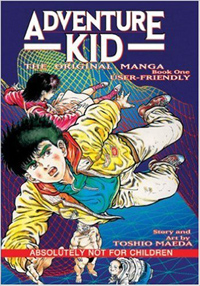
When I depict the details of such tentacles it’s not a dick, it’s just part of a monster’s body, so it could get through the censors. That’s why I did it.
Another reason I did it is when using the tentacles, I could draw different types of positions for the ladies, which was good as an artist. It was creative. Using tentacles, there was no gravity… So I could draw women in any type of position. And I loved that.
I read in an interview that when working on Urotsukidoji, your editor was kind of against it?
Yeah, because he didn’t understand sci-fi manga. He completely didn’t understand. Even when my manga became popular, he asked me to stop it because it didn’t make sense. He said it didn’t make sense that humans were floating in the air, you know, the tentacle scenes, he couldn’t understand that.
He just loved old-fashioned, cookie-cutter sex scenes: boy meets girl, they have sex and that’s the end. But I suspected readers and manga artists were fed up with such typical manga. I explained we were just using a trick: I was creating sci-fi or monster-type scenes, but this is just in order to make weird sex scenes. I knew readers would love it.
But the editor told me in strong words to stop, so I did. That’s why the story [of Urotsukidoji] just ends. I was in a rush to finish it. After that, the tonkubon sold like hotcakes, so my editor came to my studio and begged me to continue the manga. I told him, “cut the crap and get out of here!”
What do you make of the tendency now towards moe?
There’s nothing wrong with moe, but the styles and storylines are kind of similar. I don’t know why readers aren’t sick and tired of reading the same storyline. Probably because of the different artists?
But the point is, it looks pedophilic. In some manga, the female, you know, the victim, looks six or seven years old. I hate it. The Tokyo governor tried to propose a strict law against such pedophile manga, and many famous manga artists were so against it because it is against of freedom of speech or such crap.
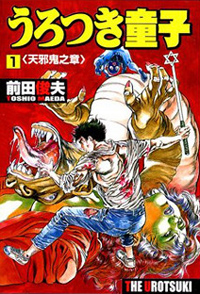
But actually, I supported such a law because if you a baby girl, or girl, as your daughter, and something happened… It would be so bad, right? So before something happens, we should do something about it. My manga, I think, as far as I’m concerned, is just designed for grownups. It’s completely 18+. It’s completely different from moe style, with, you know, the little girls as victims. That’s what I think. Can I say that? It’s an otaku magazine, so they’ll get really pissed off about my comment! [laughs] But actually, I hate it.
Your website is very unique. For a monthly or annual fee, you can read your manga, and I read you also personally give your subscribers tours of Tokyo.
Yeah, actually, my website’s main purpose isn’t to make money. Actually, I needed some way to contact, or allow people to contact me. If they become a member of Tentacle Club, which is the name of my website, if they come to Tokyo, I like to introduce or show them around Akihabara or Asakusa.
But actually, I spent too much money on it! The annual fee is ¥6000, which means less than $60, but sometimes students come and they don’t have money, so I have to buy them meals! So, I’m in the red, actually! And some are greedy and ask too much [of me]. I’m in deep shit, to tell you the truth!
But I like to help them, because when you’re in another country, you need someone who’s familiar with the location and the food, because you don’t know anything! Mostly, Japanese people aren’t very good at handling English. To some degree, I can handle it.
What kind of places to do go to?
Mostly Akihabara, because, you know, it’s the mecca of otaku. Also Asakusa or other traditional types of places.
That’s quite unique. In the west, at least, we think of manga artists as being very reclusive and not wanting to talk much with fans.
Actually, I’m one of them. It seems like I’m an extrovert, but actually, I’m basically an otaku. I like “cocooning.” I love to watch videos and I love to read books.
But I’m an Osaka man. Osaka men are well-known as comics, so I can pretend to be a comedian. Or I have different personalities, right? I hope I’m not a psychopath! [laughs]
How did you learn English?
Actually, it was videos and movies. That’s why my English is full of four-letter words and full of shit. [laughs] Sorry about this!
Speaking of movies, I’ve heard for Urotsukidoji, you weren’t very involved in the anime production?
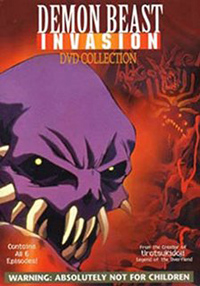
Actually, for the first version, I got involved. Because it was my first anime and I wanted to do something for it. And the director was willing to accept me, and we discussed the details and everything.
But after that he just quit. And the new director, he didn’t like that, because, you know the anime world and the manga world are totally different.
So after that, I checked the anime out. Totally different from what I imagined, but I can’t complain. Once you say, “okay, you can make an anime [version],” you don’t have any right to bitch.
Was that the same situation with other adaptations?
Yeah, the same.
Were there any you were particularly happy with?
[pauses] I don’t know. You can decide. The anime fan can decide. Its not really for me to decide. It’s up to them.
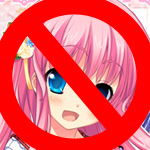
Related Stories:
– Canadian Man Jailed For Watching Anime Porn
– UK Man Convicted for Prohibited Underage Manga Porn
– Tokyo Government Restricts Manga as “Unhealthy”
– CNN Vilifies Manga as Child Porn
– MOE! What does it mean? What hath it wrought?
For more interviews with anime and manga creators, visit our interview tag page.


